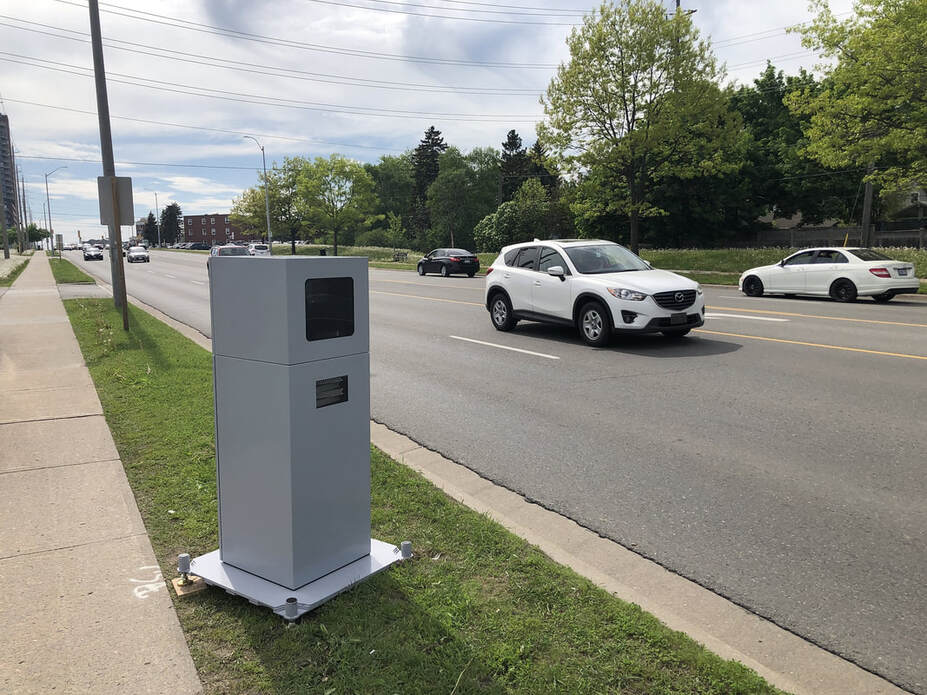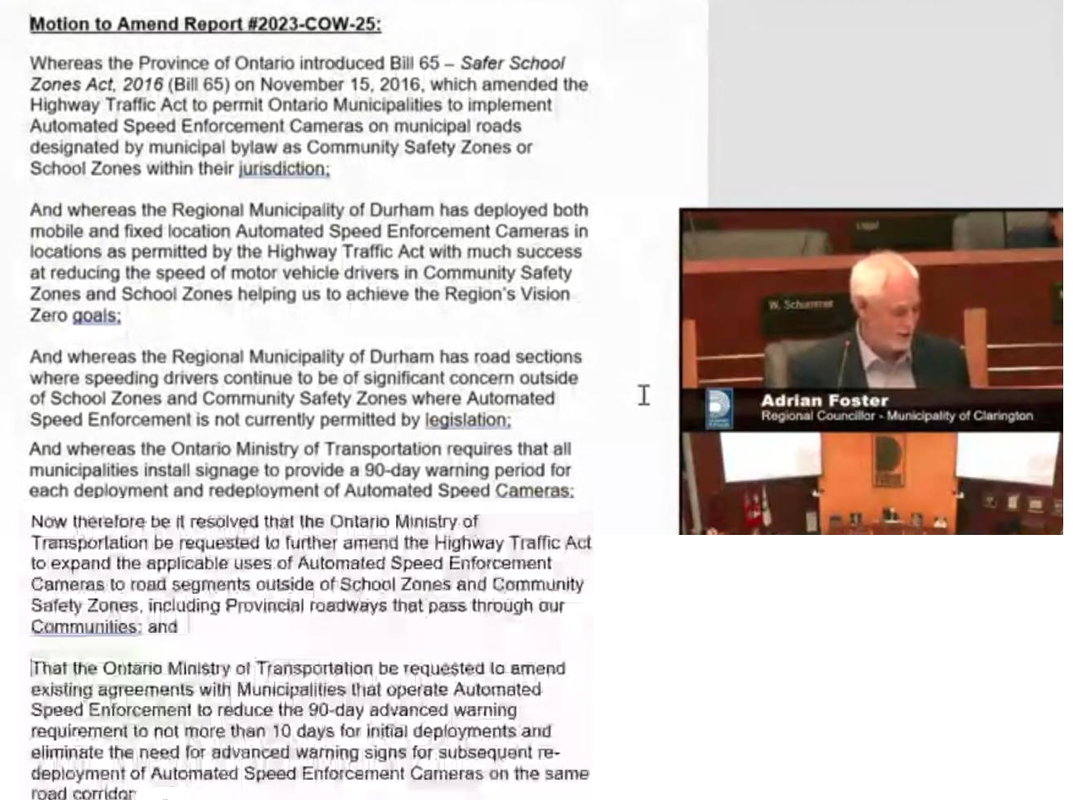
Today is the last Region of Durham Council meeting until September. On the Agenda is a report coming up on the Automated Speed Enforcement camera program. It includes a request that MTO consider some changes that would open up the program to consider sites beyond school zones and community safety zones and lessen some of the signage requirements.
https://calendar.durham.ca/.../e48aeb7f-bd65-465c-bf64...
The fact the Region now has produced this latest report bodes well for the City of Oshawa getting around to approving ASE program on Oshawa local roads. During the last term of Council, the Mayor and some Councillors were hesitant to have any discussion on speed cameras on Oshawa local roads, saying they wanted to wait until they had more information from the Region on its success and costs. Meanwhile Ajax and Pickering went ahead and installed speed cameras on their local roads.
Although I am not on Region Council, I learned from Region staff that prior to the report being on the Council Agenda today, the discussion took place during the June 14 th Region Committee of the Whole meeting, and the two recommendations were made by Clarington Mayor Foster. Here is the link to the video of the COW June 14 meeting https://www.eventstream.ca/events/durham-region ...looking into it you can hear the discussion which starts at 1:18 on the video... I listened for a bit, there were comments about maximizing this tool for public safety and that other municipalities are attempting to make the same changes.
Adrian Foster moved the motion and Granville Anderson seconded it. Then Ajax Councillor Marilyn Crawforth , the Mayor of Brock and Brian Nicholson spoke, as well as the Acting Commissioner of Region Works. It sounded pretty fair, the 'relaxing' of the areas where the AES can be located and reducing the 90 'WARNING" sign that the camera is coming seems reasonable.
https://calendar.durham.ca/.../e48aeb7f-bd65-465c-bf64...
The fact the Region now has produced this latest report bodes well for the City of Oshawa getting around to approving ASE program on Oshawa local roads. During the last term of Council, the Mayor and some Councillors were hesitant to have any discussion on speed cameras on Oshawa local roads, saying they wanted to wait until they had more information from the Region on its success and costs. Meanwhile Ajax and Pickering went ahead and installed speed cameras on their local roads.
Although I am not on Region Council, I learned from Region staff that prior to the report being on the Council Agenda today, the discussion took place during the June 14 th Region Committee of the Whole meeting, and the two recommendations were made by Clarington Mayor Foster. Here is the link to the video of the COW June 14 meeting https://www.eventstream.ca/events/durham-region ...looking into it you can hear the discussion which starts at 1:18 on the video... I listened for a bit, there were comments about maximizing this tool for public safety and that other municipalities are attempting to make the same changes.
Adrian Foster moved the motion and Granville Anderson seconded it. Then Ajax Councillor Marilyn Crawforth , the Mayor of Brock and Brian Nicholson spoke, as well as the Acting Commissioner of Region Works. It sounded pretty fair, the 'relaxing' of the areas where the AES can be located and reducing the 90 'WARNING" sign that the camera is coming seems reasonable.
DRPS does not issue 90 day warning that they are going to be enforcing the rules of the road and making public the days and locations where they will be handing out tickets, so why have a 90 day warning sign? Although the motion is to reduce the 90 day warning to no more than 10, some said why give any notice, if drivers fail to follow the speed in front of a school or run a red light do you think they have a right to complain that they didn't know the camera would be there?
The Commissioner said that clearly the problem with the system has to do with the logjam at the City of Toronto PROCESSING CENTRE. The City of Ottawa is now talking about having its own Processing Centre, which could help free up space at Toronto's.
As so many municipalities are wanting to double their cameras, in the future the Commissioner said Durham may look at having its own.
But, to keep the costs down and avoid a proliferation of these cameras, the simple answer is for drivers to follow the rules of the road.
The presentation at the start of the meeting was interesting. Melissa Hutchinson, Project Manager Region Health Dept. and Beth Brannon the Senior Director Mental Health and Addictions Lakeridge speaking to the complex issues and having broad approaches, including harm reduction (which is about keeping the person alive at the moment) and long term treatment for change, but said desire or being open to change has to come from the individual first. The overdose fatality rate is down. but still having 360 overdose calls a year, and each overdose costs $4,000 per call.
The Commissioner said that clearly the problem with the system has to do with the logjam at the City of Toronto PROCESSING CENTRE. The City of Ottawa is now talking about having its own Processing Centre, which could help free up space at Toronto's.
As so many municipalities are wanting to double their cameras, in the future the Commissioner said Durham may look at having its own.
But, to keep the costs down and avoid a proliferation of these cameras, the simple answer is for drivers to follow the rules of the road.
The presentation at the start of the meeting was interesting. Melissa Hutchinson, Project Manager Region Health Dept. and Beth Brannon the Senior Director Mental Health and Addictions Lakeridge speaking to the complex issues and having broad approaches, including harm reduction (which is about keeping the person alive at the moment) and long term treatment for change, but said desire or being open to change has to come from the individual first. The overdose fatality rate is down. but still having 360 overdose calls a year, and each overdose costs $4,000 per call.
